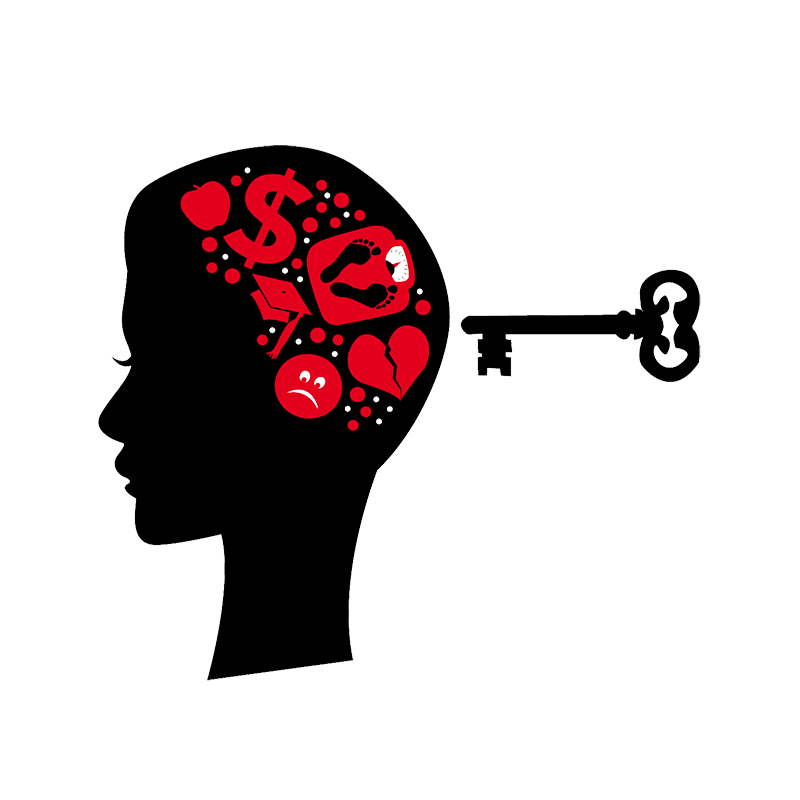Emotions = our early warning system
When we are in any kind of pain, whether it be emotional or physical, it’s our body’s way of reminding us that it needs some attention. But often with the pressures of modern-day life, we have too much going on, and we can’t stop taking care of it. Plus we get societal pressure to be “cool”, resilient, and strong, and this encourages us to ignore the pain. However, if we ignore our pain, we sabotage our abilities to heal. If we do this enough, the pain accumulates and stresses the body, resulting in a disease that becomes harder to fix than if we’d addressed the problem early.
John D. (Jack) Mayer says, “Emotions operate on many levels. They have a physical aspect as well as a psychological aspect. Emotions bridge thought, feeling, and action – they operate in every part of a person, they affect many aspects of a person, and the person affects many aspects of the emotions.”
As a Holistic Brain Health Practitioner who accesses the subconscious to determine underlying causes of symptoms, I often frequently find that releasing trapped emotions can not only drastically change our mental health, but it can substantially (sometimes completely) reduce our physical pain, improve our immune system, help us overcome our resistance to changing our behaviors, open our hearts, enhance our cognitive functioning, and increase our motivation, drive and well being.
But wouldn’t it be better if we could find a way to not trap them in the first place?
How to let go of emotional pain:
“Go ahead, cry it out.”
Have you seen mothers try to soothe their crying babies, by rocking them and telling them to “go ahead, cry it out”? If you had parents that allowed you to express your emotions and accept them, you probably feel much more comfortable with the idea of having negative emotions. And the negative emotions are less likely to impact you in the long term. But if your parents scolded you or told you directly or via their behavior that it wasn’t ok to have your emotions, then that lack of acceptance means that they get stored in your bodies to affect you in other ways.
There are various ways to let go of negative emotions, but the important characteristics of your strategies need to be a.) an awareness of your emotion b.) loving acceptance of your emotion c.) knowing that they can pass. d.) Knowing when to seek support to address the roots of the problem.
Here are a few strategies to choose from:
1.) The mindfulness approach:

This strategy is inspired by Bhodipasksa from his meditation, “Healing pain with compassion” in Guided Meditations for Busy People.
In the meditation, he encourages us to develop awareness of the place where we feel the pain. Let go of judgment or urge to get rid of it, and just be aware of where the pain is in our bodies and how it manifests. Just watch, feel and listen. Then give it loving kindness. As we do so we will notice that the pain will pass.
His teaching is confirmed by the experience of Jill Bolte Taylor, Ph.D. a Neuroanatomist at Harvard who had a stroke in the left hemisphere of her brain. When only the right hemisphere of her brain was working, she learned that just by watching an emotion without judgement for 7 seconds, it will pass.
2.) The imagery approach:

This strategy is inspired by John Bradshaw’s Book “Home Coming: Reclaiming and Championing Your Inner Child”
In this book, Mr. Bradshaw recommends connecting with your inner child. Find an age where this emotion might have been dominant. For example if you are feeling heartache, and your father left you your family when you were 3, connect with your 3 year old. Imagine that the adult part of you is now here to take care of your inner child. Try to use as many senses as possible as you imagine you the adult, giving a safe and loving space to allow your inner 3 year old to express that pain. Let that 3 year old, go ahead and cry it out.
3.) The Compassionate Listening Approach:

This method is inspired by the teachings of Marshall Rosenberg’s Non-Violent Communication: A language of Life.
Marshall Rosenberg teaches us to listen compassionately to others for their feelings and needs. For example if you practice this with another person, after expressing your pain, your friend would say something like, “Are you feeling ______ , because you are needing______________? The best way to experience this is to look for a non-violent communication practice group either locally or online. I remember the first time I had experienced this. The experience was profound and I was moved to tears. It was the first time I really felt in a very deep way that I had been completely heard and understood.
If your feelings have been neglected for too long, and you can’t seem to find peace, you will benefit from more support. I use the Emotion Code and the Body Code to help clients release trapped emotions, sabotage, beliefs and so much more. We work with root causes, whether they are from your early life, inherited experiences, or even past lives. Contact me if you are interested in a complimentary consultation to discuss how I might be of further support to you.



